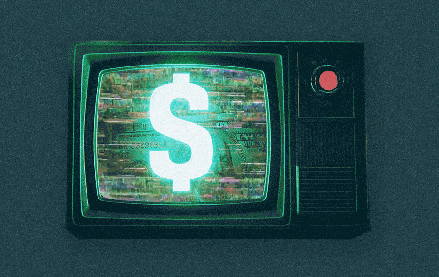Save 50% on a 3-month Digiday+ membership. Ends Dec 5.
Future of TV Briefing: The programmatic state of play for this year’s TV and streaming upfront market

This Future of TV Briefing covers the latest in streaming and TV for Digiday+ members and is distributed over email every Wednesday at 10 a.m. ET. More from the series →
This week’s Future of TV Briefing looks at how the programmatic guaranteed versus private marketplace debate is shaping up as programmatic becomes an upfront fixture.
- Get with the programmatic
- Amazon’s studio chief exits, Disney’s DE&I dilemma and more
Get with the programmatic
Programmatic has firmly become part of the upfront. “There was a huge swing last year,” said one agency executive, referring to TV network and streaming services being more willing to allow advertisers’ programmatic spend to count toward their upfront commitments.
What remains in limbo, though, is which programmatic deal framework will win out.
As has been the case, upfront ad buyers largely prefer programmatic private marketplace deals, which allow advertisers and agencies to control how money is spent. By contrast, upfront ad sellers would rather programmatic guaranteed deals that offer TV network and streaming service owners more assurance that that money will be spent.
And that’s still largely the case. But the situation is becoming more nuanced.
“I think it’s still going to be the network is going to say, ‘If you want to do it, it’s PG, and then if you want PMPs, we figure that out in market or, if you want PMP, here’s the new commitment that we would need from you,’” said a second agency executive.
AMC Networks and TelevisaUnivision, for example, have put guardrails in place to accommodate ad buyers’ PMP preference while ensuring that revenue is secure.
“If somebody says, ‘I’ll commit $500,000 to you in the upfront; I want to buy it on a PMP,’ it’s like great. Your response rate has to be X; your win rate has to be Y; and if you’re Z percent through the campaign and you’re not hitting both of those [thresholds], we have to convert this back to a PG deal,” Evan Adlman, evp of commercial sales and revenue operations at AMC Networks, said on stage at last week’s Digiday Publishing Summit in Vail, Colorado.
TelevisaUnivision similarly has guardrails in place. “We limit the percentage of dollars committed that can flow through PMP,” Fernando Romero, svp of U.S. advertising sales at TelevisaUnivision, said in a separate on-stage session during DPS.
Additionally, the TV network and streaming service owner limits what inventory it makes available to which demand-side platforms, so it also needs to work with advertisers and agencies to ensure the buyers’ preferred ad tech firms are set up to receive TelevisaUnivision’s impressions programmatically.
While ad buyers still generally prefer PG deals, one TV network executive who spoke on condition of anonymity said they are seeing more openness from the buy side toward PMP deals. Now, take this with a spoonful of salt because everything’s part of the upfront negotiation, including talking to journalists, but also consider advertisers’ recent scrutiny of ad tech fees:
“I do think now we’re starting to hear a little bit of a flip, in some cases, back to PG. And I think some of that might be based on fee models across certain DSPs where PMP fees are higher than PG. So there are some commercial components that I think are influencing how buyers want to buy,” said the TV network executive.
What we’ve heard
“On the CTV side, there is so much glut of inventory that we continue to feel downward pressure on the CPMs. The bigger players — Amazon, Google — they have a lot of inventory, and they can afford, obviously, to put price pressure on the CPMs.”
— Publishing executive during last week’s Digiday Publishing Summit
Numbers to know
$550 billion: YouTube’s estimated value, at the high end, according to MoffettNathanson.
~0: Amount of time that a YouTube Short must play on screen now to count as a view.
34%: Percentage share of surveyed U.S. adults who support a TikTok ban, down from 50% two years ago.
25%: Percentage decline in entertainment industry jobs in 2024 compared to 2022.
~8,500: Number of problems related to MLB TV’s Opening Day stream submitted to Downdetector before the technical issues were addressed.
What we’ve covered
Marketers are calmer about TikTok’s future in the U.S. — even as its ads team thins out:
- TikTok execs have told ad execs they’re confident about the platform’s future in the U.S.
- TikTok’s president of global business solutions Blake Chandlee is the latest executive to depart the platform.
Read more about TikTok here.
TV upfronts-style Spotter Showcase pitches creators as the future of entertainment:
- Last week creator platform Spotter hosted an upfront-style presentation for creators to pitch their programming to advertisers.
- The showcase focused on pitching brand integrations in creators’ videos versus traditional pre- and mid-roll inventory.
Read more about Spotter Showcase here.
What we’re reading
A little more than a month before Amazon’s upfront presentation, Jennifer Salke, a former NBC and 20th Century Fox exec, has stepped down as the leader of Amazon MGM Studios, and her role will not be filled, according to The New York Times.
Maybe this is the year that the TV advertising industry finally undergoes its years-in-the-making measurement overhaul, now that Nielsen’s data-based measurement system has received Media Rating Council accreditation, according to Ad Age.
Having previously targeted Paramount and Comcast’s NBCUniversal for their diversity, equity and inclusion commitments, the Federal Communications Commission is now threatening Disney for supporting underrepresented groups of people, according to Business Insider.
Want to discuss this with our editors and members? Join here, or log in if you're already a member.
More in Future of TV

Future of TV Briefing: The streaming ad upfront trends, programmatic priorities revealed in Q3 2025 earnings reports
This week’s Future of TV Briefing looks at what TV and streaming companies’ latest quarterly earnings report indicate about the state of the streaming ad market.

Future of TV Briefing: The creator economy needs a new currency for brand deals
This week’s Future of TV Briefing looks at why paying creators based on reach misses the mark and what IAB is doing to clear up the creator-brand currency situation.

Future of TV Briefing: WTF is IAB Tech Lab’s device attestation tactic to combat CTV ad fraud?
This week’s Future of TV Briefing breaks down the CTV ad industry’s new tool for fighting device spoofing.







